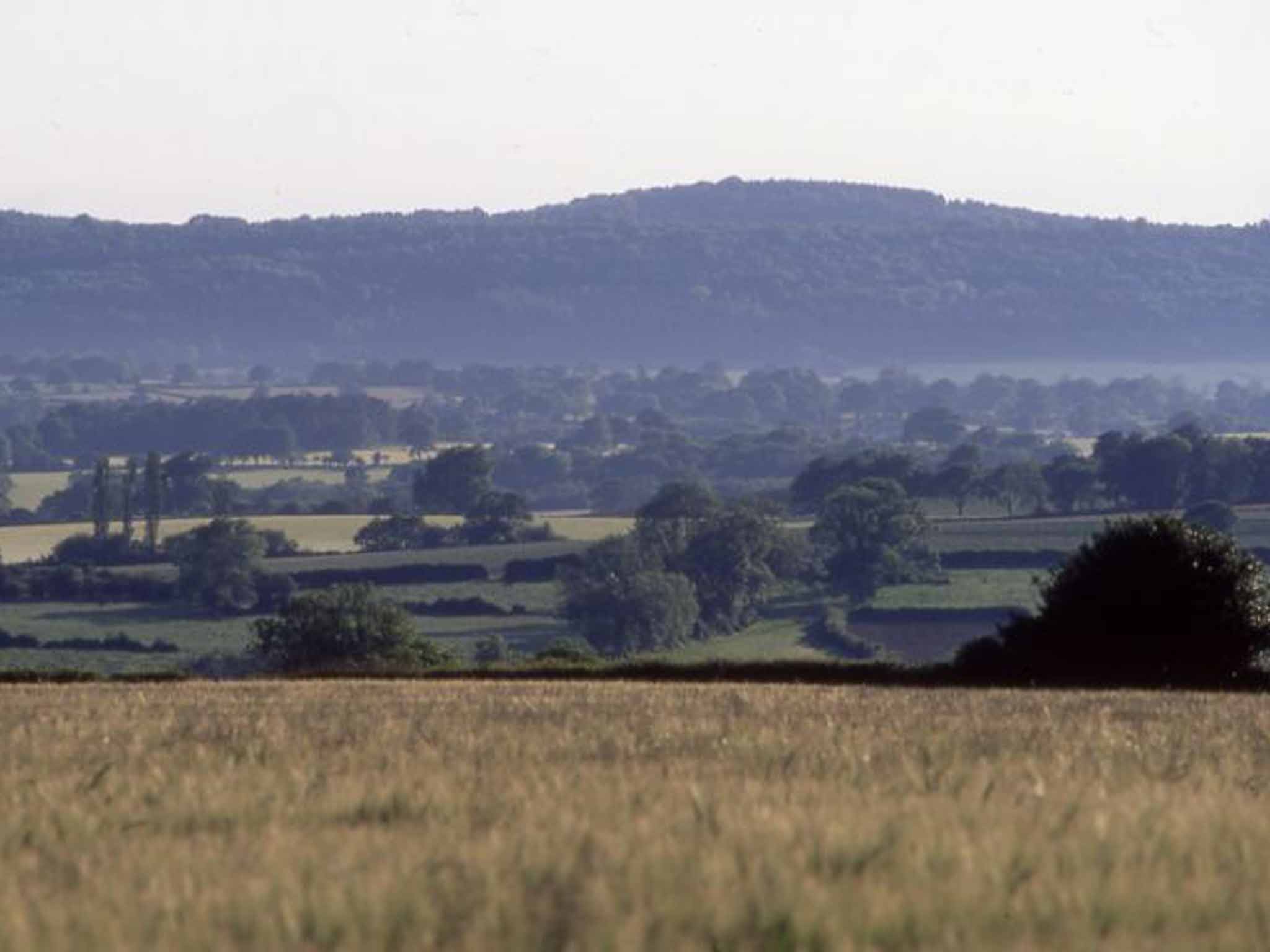Walking in Shropshire: Bandits, buzzards and the Black Hill
Seventy five years after Bruce Chatwin's birth, Mark Rowe follows in what could have been the travel writer's footsteps

I'm deep in border country, the western edge of Shropshire, and of England, teetering on the lip of an empty quarter of Wales, the back of beyond if you like. I drive through the singular town of Bishop's Castle on my journey from Shrewsbury, but I have a few miles yet to travel. My destination is Clun, tucked away in the hills to the south and west. Beyond the back of beyond. There's a 14th-century packhorse bridge, a 2,000-year-old yew in the churchyard where the actor John Osborne is buried, and the vibrant Sun Inn dates to the 16th century.
My walk is – possibly – following in the footsteps of Bruce Chatwin, who was born 75 years ago. His novel, On The Black Hill may be loosely based on the hill of the same name that rises above Clun. He wrote much of the novel at nearby Cwm Hall, though a glance at the Ordnance Survey maps confirms several other Black Hills within easy reach both of Clun and of Chatwin's sometimes over-fictionalised accounts.
Our Black Hill is covered in pines, and looks dauntingly distant and elevated from the bottom of Clun's Church Street. The climb is steep from the off, but the views distract me from pinging hamstrings. A rainbow casts a shower over Clun and a receding staircase of rolling humpback hills creates the impression of a landscape slightly out of focus. Some of these hills host just a single tree, encumbered by nothing but big Shropshire skies. I wonder what medieval marauders and magnates must have made of it – a cast of characters that ranged from Eadric The Wild to the Earl of Shrewsbury – forever clambering up one hill, only to see many more lying in wait.
To the north, I can clearly pick out the Devil's Chair, the highest of the ensemble of stony tors on the Stiperstones ridge, and the bare windswept Cefns, or Welsh ridges that pull the land north from Clun. Far below in the valley, Clun Castle, dating to the 11th century, fronts air on a raised belly button of land above the town. The ascent finally relents at the lonely crossroads of Little Pen-y-wern where I now take in views south, to the Brecon Beacons and I contour along an ancient drovers' track towards the Black Hill. A humdrum path bordered by conifers leads me to the plateau.
For a moment, I wonder what the fuss is about. The high pines, shoehorned into their plots like sardines, dim the light and obscure the view. Then the path turns its back on a transmitter mast that pokes out above the dense fir canopy and I'm treated to an extraordinary view of Shropshire and Worcestershire. To the distant east I can pick out the dragon's back ridge of the Malverns, much closer is the caterpillar-shaped Wenlock Edge. But it's the side-on panorama of the Long Mynd ridge that really holds the gaze, cloaked in heather, sweeping down and up again to the Stiperstones. An artist might wish for a couple of craggy lumps and bumps to the north-east to complete the picture, and there they are: Caer Caradoc and Ragleth Hill, looming over the ancient volcanic vista known as the Church Stretton fault.
I descend into woodland again; I'm above, but parallel to, the Clun Valley. It's as fetching as anything you'll find in the Lake District – it reminds me of the Troutbeck valley outside Ambleside – but without the crowds. To be exact, on this particular day, without anyone.
I return along more quiet lanes, past the church with its striking wooden lych gate, to the car park. A small wooden bridge takes me over the Clun to wander around the castle. I'm startled to find myself overlooked by a buzzard just a few feet above me in a tree. It doesn't move. This is extremely unusual behaviour for a bird of prey. I wonder if it's stuffed. I walk on to the castle. The buzzard continues to stare me down, only later flapping away in patent exasperation. Chunks of Chatwin's dark novel come back to me. Suddenly, Clun feels like an edgy version of Trumpton.

Just for a change, the toilets are open on a Sunday, and even more rarely, they are clean and they pipe music. It adds meaning to Clun's claim to be a "Walkers are Welcome" town. This sense is reinforced by a visit to the Maltings café on the Lilliputian high street, where the cakes will satiate any hiker's appetite. A E Housman described Clun as "the quietest place under the Sun". He obviously never met a Clun buzzard.
DISTANCE: 5.5 miles
TIME: Three hours
DIRECTIONS: This walk, and others around Clun, can be downloaded from clun.info/
Getting there
Between Easter and September, Clun is served by the Castle Connect weekend shuttle bus (shropshirehillsshuttles.co.uk). Otherwise it can be accessed via the Heart of Wales rail line to Knighton (heart-of-wales.co.uk) and a taxi (knightontown.net).
Staying there
Mark Rowe stayed at the Castle Hotel (01588 638403; thecastlehotelbishopscastle .co.uk), Market Square, Bishop's Castle, which offers double rooms and dinner from £165 per night, and Middle Woodbatch Farm (01588 630141; middlewoodbatchfarm.co.uk), Bishop's Castle, which offers B&B for £40pp per night, on a visit hosted by Shropshire Council.
More information
The Bishop's Castle walking festival runs from 1-25 May (bishopscastle.co.uk).
Join our commenting forum
Join thought-provoking conversations, follow other Independent readers and see their replies
Comments
Bookmark popover
Removed from bookmarks